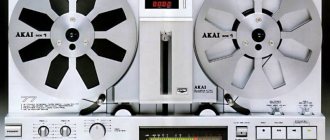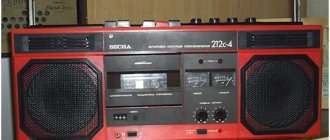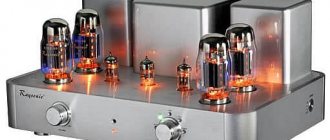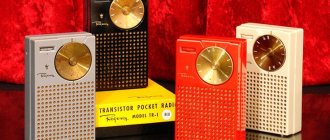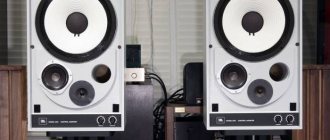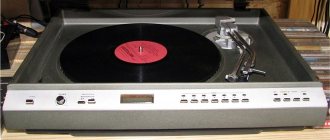Characteristics of predecessors
The invention of the tape recorder did not happen immediately. The modern device was preceded by several prototypes.
Telegrafon
The telegraph is the first tape recorder in history. The design of the telegraph (now known as a tape recorder) consisted of a wire and a cylinder. In this case, the wire was wrapped around the cylinder. The cylinder itself carried out circular movements like a clock mechanism. It is also worth keeping in mind that instead of ordinary wire, Waldemar Poulsen used a piano string.
Obviously, such a mechanism had a number of disadvantages. So, it was quite voluminous in size, and its operation also required a fairly large amount of wire, since the consumption itself was enormous. As an example, we can give the following figures: in order to record 20 seconds of sound, it was necessary to use about 50 meters of piano strings.
The accidental invention of Voldemar Poulsen from Denmark created a real sensation all over the world. This invention received prestigious awards and grand prix at international competitions. After the scientist’s work received wide publicity, he began to improve his “brainchild.” Poulsen invented a model consisting of reels and thin tape. This design turned out to be much more efficient and more reminiscent of modern tape recorders.
Shorinophone
This device was created by our compatriot and named after him. Shorinofon was released in 1931.
This unit can be classified as a portable device. To record or play back sound, you must insert a cassette with tape into it. This tape must be looped. The recording process occurs thanks to a special element - the so-called cutter. It vibrates and creates a sound groove on the celluloid.
Foreign products in the USSR
A Sony, Panasonic, Philips or Sharp cassette recorder was the dream of the Soviet consumer. An item of status and high quality cost exorbitant amounts of money and was obtained with great difficulty, since it was not widely sold. If a domestic tape recorder cost up to several hundred rubles, wealthy citizens were willing to pay more than a thousand for an imported one.
Why did people pay so much money if, as mentioned above, Soviet industry also produced quite decent models? Firstly, among tape recorders originally from the USSR, it was mainly the stationary models that had good sound. Portable products could not be compared with their foreign counterparts. Moreover, imported portable cassette players were much lighter than even the most modest in size (and poor sounding) varieties of “Spring”.
The second important factor in why cassette recorders from Japan and Europe beat the products of the Soviet electrical industry was design and ergonomics. Domestic consumer electronics differed little in appearance from technical equipment from some scientific laboratory or factory workshop. The West in this area has long taken a different path: what a person uses should be convenient and pleasant to look at.
Story
After the October Revolution, the first radio broadcasters appeared, but they could only be found in large cities. Old Soviet broadcasters looked like black square boxes, and they were installed on central streets. To find out the latest news, citizens had to gather at a certain time on the city streets and listen to the announcer's messages. Radio broadcasts in those days were limited and aired only during established broadcast hours, but newspapers duplicated the information, and it was possible to read it in printed form. Later, after about 25-30 years, USSR radios changed their appearance and became a familiar attribute of life for many people.
After the Great Patriotic War, the first radios began to appear on sale - devices with which you could not only listen to the radio, but also play melodies from gramophone records. The pioneers in this direction were the Iskra receiver and its analogue, the Zvezda. Radios were popular among the population, and the range of these products began to expand rapidly.
Peculiarities
The Legend tape recorders pleasantly surprised us with their compact sizes. Despite its portability, the equipment was endowed with additional capabilities.
- In addition to recording and playback functions, the device worked as a radio receiver. And judging by user reviews collected in the APZ History Museum, it coped well with its additional task. For this purpose, the tape recorder included a special removable unit (radio cassette), which served as a long-wave radio receiver.
- Despite its domestic purpose, the tape recorder had reporting capabilities, which is why it appealed to the employees of Nizhny Novgorod Television, who used the products almost until the 2000s. The device was equipped with a self-powered MD-64A microphone with a remote control button. In addition, reporters appreciated its light weight, small size, durable body made of “indestructible” polystyrene and leather case with a comfortable shoulder strap.
Famous Japanese models
The world's first tape recorder was created back in 1898. And already in 1924 there were many companies that were engaged in their development and production.
Japanese tape recorders of the 80s and 90s, sold in our country, were quite expensive sound recording equipment, so not everyone could afford such luxury. The most popular Japanese models of this period were the following brands of tape recorders.
TOSHIBA RT-S913. The unit was characterized by the presence of a high-quality speaker system and a powerful amplifier. This single-cassette tape recorder was the dream of many teenagers. It sounded great and reproduced music well. The front side of the tape recorder was equipped with two LEDs; the equipment could be switched to extended stereo sound mode.
- JVC RC-M70 - tape recorder was created in 1980. It had the following characteristics: dimensions (WxHxD) - 53.7x29x12.5 cm;
- LF speakers – 16 cm;
- HF speakers – 3 cm;
- weight – 5.7 kg;
- power – 3.4 W;
- range – 80x12000 Hz.
In addition to the above-mentioned tape recorders, the Japanese companies Sony, Panasonic and others released other models to the market, which were also popular, and today are considered rarities.
Copying sound recordings
One of the most important advantages of a tape recorder is the ability to make an audio recording at home. Magnetic tape gave people the opportunity to save the voices of loved ones and friends, make voice recordings, and also copy professional phonograms. Of course, each new copy was inferior in quality to the original, which made the voices and melodies almost unrecognizable over time, but for its time this was huge progress.
Copying of magnetic tapes was carried out on reel-to-reel tape recorders: for this you needed two devices and a connecting cable. Cassettes were copied in much the same way until double-cassette tape recorders appeared. Foreign two-cassette players were initially designed to make copying cassettes as convenient as possible. As an example, we can cite the model RX-FT510 equipped with the function of synchronous start of playback and recording.
The cassette recorder was used to copy recordings not only for personal purposes, but also for commercial ones. Audio pirates typically assembled a multi-deck design that allowed them to record half a dozen tapes simultaneously.
Related devices
Perhaps not everyone knows that many devices called tape recorders in everyday life are not such at all. A tape recorder is an all-in-one device that can itself record and play back sound. Close to it are:
- Cassette recorder (deck). It records sound and plays tapes, but to listen to recordings you need to connect it to an external amplifier and speakers or use headphones. An example is the Mayak-233 cassette tape recorder.
- The player (player) can only play back the recording. Players became very popular after the success of the compact Sony Walkman.
- The tape recorder panel was built into other devices: radio tape recorders, stereo systems.
Fighting noise
The disadvantage of cassette recorders has long been the sound quality. The smaller width of the tape, in comparison with its reel-to-reel counterparts, and the speed at which it was pulled determined the noise of the sound, which made the melodies difficult to understand. The solution was found in 1969 by Ray Dolby, who came up with a technique for suppressing noise by introducing distortion into the recording, which will be leveled out during playback, making the sound relatively clear.
Cassette recorders sounded even better with the advent of new types of magnetic tape with coatings based on chromium dioxide and metal powder technologies. Now cassette players could offer sound whose quality suited not too demanding music lovers and was suitable for home recording. Discerning music lovers listened to records, but truly important recordings were still made on reels.
The reel-to-reel tape recorder is the forerunner of the cassette tape recorder.
Sound recording on magnetic tape was carried out back in the nineteenth century, and the industrial production of household tape recorders was mastered in the 1940s.
Gradually, recording technology was raised to a very high level, but there was no need to talk about ease of use. It was difficult to move bulky, heavy instruments from place to place, and when turned on, the reel-to-reel tape recorder was completely untransportable. The reels on which the magnetic tape was wound were also not compact, and also required tedious manipulations from the listener every time the tape was listened to the end.
Settings
Setting up a reel-to-reel tape recorder correctly is not an easy task and requires specific knowledge and skills. We advise amateurs to take the device to a specialized licensed workshop for setup. In general, the step-by-step configuration process may look like this:
- cleaning the path of movement of the tape and demagnetizing the elements of the CVL in contact with it;
- equalization of input and output voltages as the signal passes through the path;
- playback of calibration tape;
- adjusting the azimuth of the playback head;
- playback of calibration signals 1 and 10 khz and their adjustment;
- installing a reel of new tape on the device;
- adjusting the azimuth of the recording head;
- adjusting the bias by recording to a new 10 khz frequency tape from the generator;
- setting up the recording itself.
Next you will find a review of the Olymp MPK-005 reel-to-reel tape recorder.
The birth of cassette players
Cassette recorders were designed to eliminate this drawback. We owe the appearance of magnetic compact cassettes (as they were called then) to Philips, which presented this development back in 1963.
Now you could carry an hour and a half of music recordings in your pocket. And to listen to the second side, it was enough to take the cassette out of the tape recorder, unfold it and put it back (later players appeared that did not even require this action).
The size of the tape recorder also decreased. In addition to stationary models, portable battery-powered devices have appeared. You could listen to your favorite music outside the home!
Overview of species
The development of production technology has led to a certain classification of types of tape recorders.
- By type of storage media - on wire, on tape, on magnetic disks, on a cuff.
- According to the methods of signal recording - analog, digital.
- According to applicability - for studios, households, for industry (magnetographs).
- According to the amplification devices used - full and soundboards.
- According to the degree of mobility, used in stationary, portable and portable forms;
- By the number of tracks - one, two, four or more tracks.
- By the number of installed heads: reproducing;
- 2 – the most common type;
- 3 – separate installation of specialized heads;
- 4 – with a head that complements the playback cycle.
Soviet tape recorders
In the USSR, the production of cassette tape recorders was launched somewhat later than in the West, around the seventies of the last century. But the assortment was not inferior to foreign ones. Dozens of enterprises throughout the Union produced hundreds of different models. From compact monophonic “toys”, like “Spring-309”, to respectable, reliable and pleasant-to-hear devices, which included, for example, the “Kometa-225” cassette recorder.
Cassettes were also produced in the Soviet Union. But if among the players it was possible to choose a completely worthy model, then the quality of domestic cassettes evoked only negative emotions among music lovers of that time. Poor sound, brittle mechanics beyond repair, short recording time on one side - all this forced us to look for funds for imported analogues. At that time, it was possible to purchase cassettes from TDK, BASF, Maxell and some others, but they cost at least twice as much as domestic ones.
